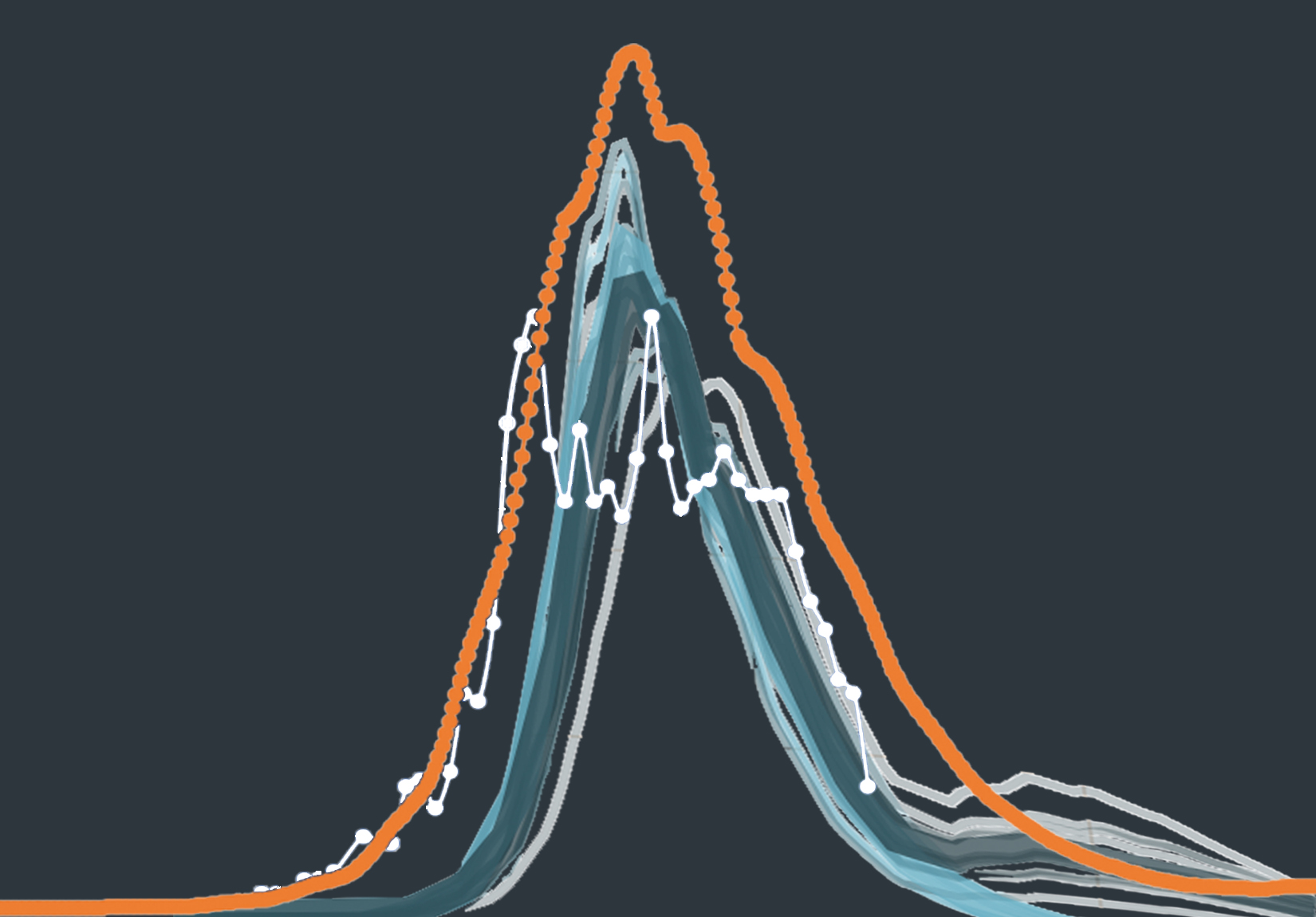Predictive modeling, data curation helps guide state in COVID-19 response
By Denise Blough

**Editor's Note: CovidCommons is now live and available for researchers here.**
With a dissertation on building models for influenza pandemics and years of experience working with health departments on complex public health problems, Ayaz Hyder was about as prepared as you could be to meet the challenges brought by the COVID-19 pandemic.
Thanks to support from Ohio State’s Office of Research and Office of Outreach and Engagement, the assistant professor of environmental health sciences is using his expertise in computational epidemiology to develop a shared data resource for agencies and organizations that are responding to COVID-19 and leading recovery efforts across Ohio.
Hyder said data sharing is increasingly important to making sense of the dozens of disconnected COVID-19 models that are created and updated daily — predicting the spread of infections, economic impacts, unemployment claims and other pandemic-related developments.
The resource he and his team have built, called COVIDCommons, will bridge the gap between varying types of COVID-19 models and datasets by compiling them in one place.
“COVIDCommons will bring these different models together in a way that allows different types of researchers across Ohio State and beyond to be able to share their data and contribute to a set of tools that can provide information to decision makers,” he said.
The modeling data, to be publicly available, can be used to run ‘What if?’ scenarios for closing and opening different schools and workplaces, as well as predict the impact of various levels of compliance with public health orders surrounding social distancing.
“We can run experiments where we infect certain individuals and see how it affects the trajectory of the epidemic, which is just not possible in the real world,” Hyder said. “It gives policymakers and decision makers a tool to use to figure out what might work best.”
For weeks, Hyder has been using similar methods to run simulation models around reopening Ohio, which has assisted the Ohio Department of Health and other government and community leaders as they make policy decisions. His intricate models use more than 100 parameters based on real-time data sets and prior studies, such as COVID-19 cases in Franklin County, mobility data, disease transmission rates and data on businesses, daycares and schools.
“It’s kind of like the game SimCity, where you essentially create your own artificial society,” Hyder said. “These simulation models are basically a computational replica of the state of Ohio or of Franklin County, and we model the spread of disease based on where people live, who they come into contact with at home, where they work, where they go to school and who they come into contact with when they’re out in the community.”
Because he was able to adapt prior modeling work from an opioid-related project supported by the National Science Foundation (led by engineering professor Raghu Machiraju), COVIDCommons was able to get up and running in time to provide immediate assistance to health offices around the state, Hyder said. He was also able to form a rapid team with the help of Can’t Stop Columbus, a volunteer-run tech-based nonprofit that began in response to COVID-19.
And he sees broader public health applications down the road.
“We’re hopeful that the work we’re doing will be directly extendable to the opioid epidemic work and the surveillance work that we’ve been doing, and potentially food insecurity and infant mortality,” he said.
A big challenge will be ensuring the needs of Ohio agencies and organizations are met in a timely manner, he said. He and his team based at Ohio State’s Translational Data Analytics Institute are working with the Ohio Departments of Education, Health, Jobs and Family Services, and Transportation; the governor’s office; Columbus Public Health; Franklin County Public Health; the Mid-Ohio Foodbank and others.
“It’s really all hands on deck, and it’s really putting into practice the fact that we’re all in this together.”
Other members of the COVIDCommons team include Goonmeet Bajaj, Jany Chan, Enhao Liu, Raghu Machiraju, Srini Parthasarathy and Michael Rayo of the College of Engineering; Harvey Miller of the Department of Geography; ChienWei (Jack) Chiang of the College of Medicine; Samuel Malloy of the John Glenn College of Public Affairs; and Steve Chang of the Translational Data Analytics Institute. Additional assistance in modeling and computational support involved Guido España of the Mathematical Biosciences Institute; Tim Huerta and Joseph Papio of the College of Medicine; Eric Franz and Wilbur Ouma of the Ohio Supercomputer Center; and Jared Huling of the Department of Statistics.
About The Ohio State University College of Public Health
The Ohio State University College of Public Health is a leader in educating students, creating new knowledge through research, and improving the livelihoods and well-being of people in Ohio and beyond. The College's divisions include biostatistics, environmental health sciences, epidemiology, health behavior and health promotion, and health services management and policy. It is ranked 22nd among all colleges and programs of public health in the nation, and first in Ohio, by U.S. News and World Report. Its specialty programs are also considered among the best in the country. The MHA program is ranked 5th and the health policy and management specialty is ranked 21st.